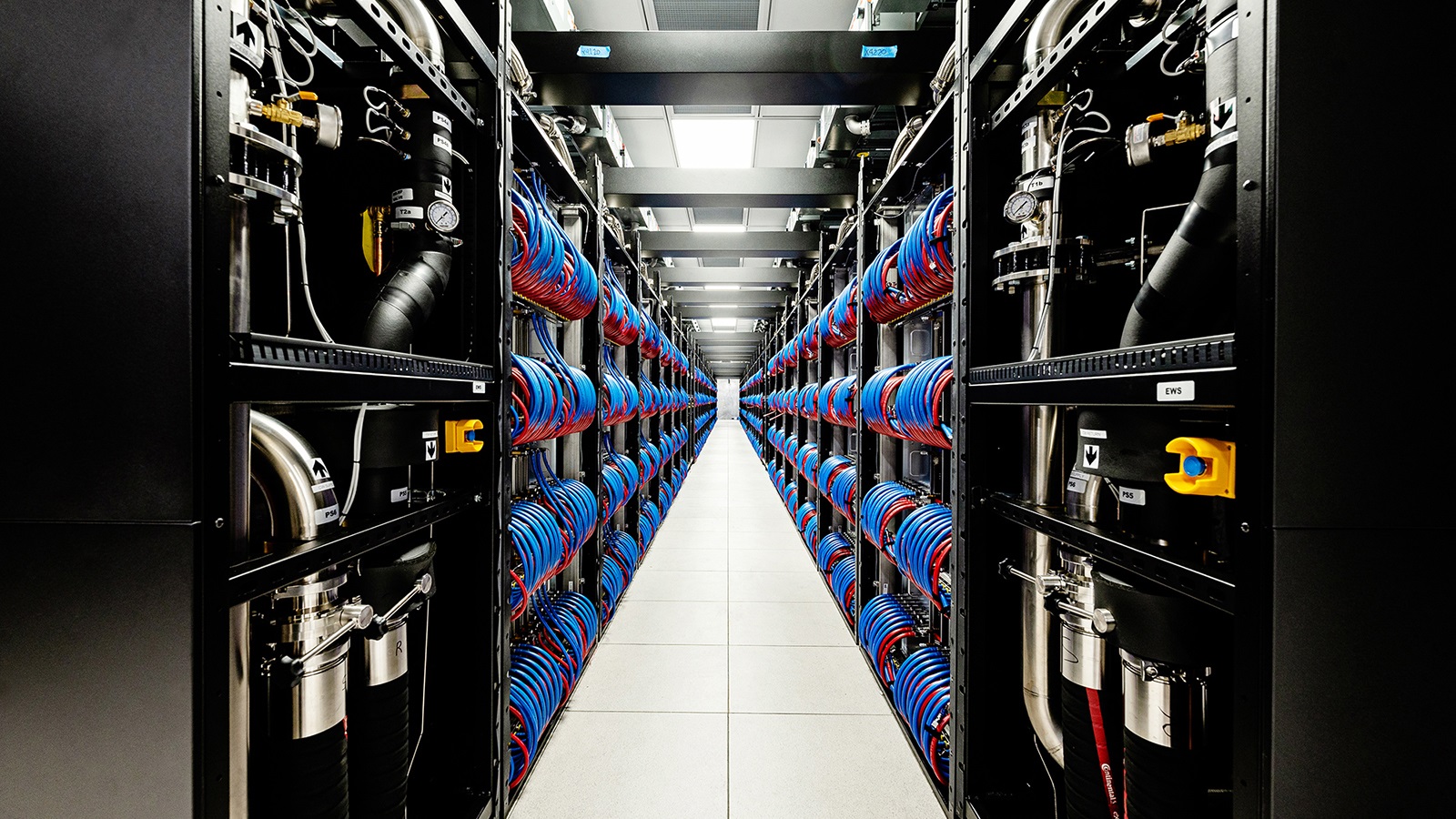Flick. It’s on.
Flick. It’s off.
A child can understand it. Our unconscious brain is trained to expect it. Only when the light doesn’t turn on do we wonder how it all works and what we need to do tokeep the power flowing.
That’s where a researcher like Ning Zhou comes in. He’s an associate professor of electrical and computer engineering at the Thomas J. Watson College of Engineering and Applied Science, and his passion is imagining the future of power grids — which are, he says, “arguably the most complex systems ever built by human beings.”
Last year, Zhou received a National Science Foundation (NSF) CAREER Award to provide a vision for power systems as fossil fuels wane and renewable energy sources take center stage. He and his team of graduate students — three PhD students and a number of master’s students at any given time — are working on both the theoretical and applied aspects of the future of power generation, transmission and distribution.
Power evolution
The basics of a power grid are fairly easy to grasp. Generating stations produce electricity, high-voltage transmission lines carry it over long distances, and distribution lines bring it into customers’ homes and businesses. In between are substations that increase or reduce the voltage as needed.
Starting with the first power stations in the 1880s, generation relied on three main pillars: coal, natural gas and hydroelectric. Nuclear plants joined the grid in the 1950s, with wind and solar added in the past few decades.
The need for renewable energy sources — ones that do not put more carbon dioxide into the Earth’s atmosphere and oceans — has become more urgent as the evidence for climate change mounts. Last year, for instance, New York state adopted the United States’ most ambitious climate target — neutral carbon output by 2050.
As important as it is to implement, Zhou and other researchers know that renewable energy also brings challenges: “We can’t get wind power without wind, or solar power at night, and that brings uncertainty and intermittent generation. We know roughly what they will bring, but we don’t know with 100 percent confidence, for example, if the wind will blow in the next hour.”
Our 21st-century lifestyle — plugged in, mobile and ever-hungry for more electricity — also adds more unpredictable factors that affect the overall grid.
“Things are changing very fast,” Zhou says. “For example, when you drive an electric car, you can park it here today in Binghamton, but the next day you could drive it to Washington, D.C. The load shift is significant. If it’s going to be more dynamic, it will need to rely on traffic patterns.”
Quantifying uncertainty
At the heart of his research, then, is something that sounds nearly impossible: quantifying uncertainty in real time so that electricity keeps flowing.
To ensure grid efficiency and reliability, power-system operators continuously monitor the grid through a process called state estimation, which collects measurements from various sensors throughout the system. However, those data points offer only a snapshot of electric generation, load needs and transmission.
Shaobu Wang, a senior engineer at the Pacific Northwest National Laboratoryin Washington state, is collaborating with Zhou to develop “situational awareness” that will make power-grid oversight more dynamic.
“We need to not only estimate things — we should be able to predict the power grid’s behavior,” Wang says. “Is it going to be stable or not stable following a crisis? What is the state of the grid in the next few minutes? We need to know what action to take to prevent instability.”
Their research dives deep into past data to create mathematical models that will use artificial intelligence to find the delicate balance of sustainability, cost and reliability.
“If there are variation and uncertainty, we need to be aware of that and let the operator know,” Zhou says. “If there’s a 70% chance of uncertainty, we need to be able to quantify that and present it clearly to the operators so that the operators can allocate resources to take care of it, by using reserves such as stored energy.”
Having such knowledge at their fingertips would help grid managers avoid smaller power disruptions and limit larger outages such as the 2003 blackout. What started as a software bug in the alarm system at an Ohio-based energy company cascaded into failures that left 55 million people in the northeastern U.S., the upper Midwest and Ontario in the dark for hours, days or weeks.
“We do not want to wait for a day or two before we get electricity again. That would be terrible,” Zhou says. “A large-scale power outage can cause some big trouble because you can’t just go out to the gas station and use the electricity. Some people rely on electricity to get their water. A lot of things are supported by the power grid.”



